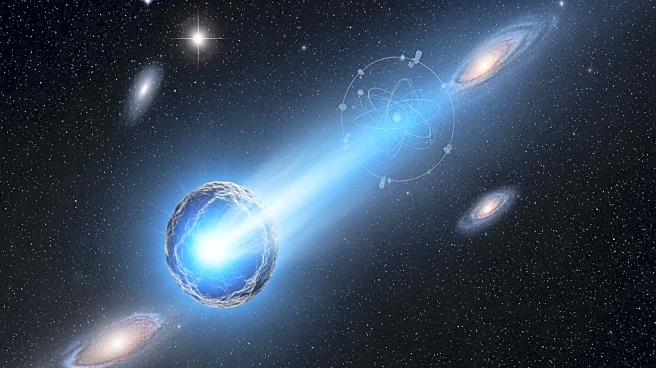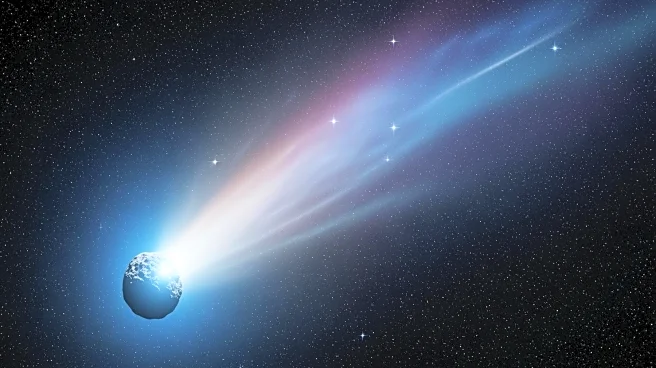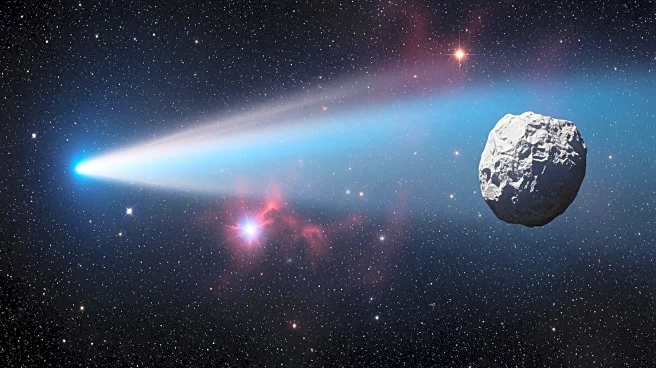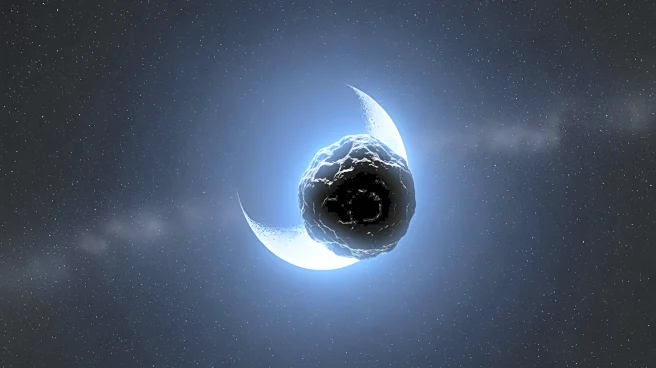What's Happening?
An interstellar object known as 3I ATLAS has sparked online theories suggesting it may have caused the Sun to 'glitch'. These theories, originating on Reddit and spreading across TikTok, propose that the comet
is an ancient alien spacecraft. However, scientists assert that 3I ATLAS is a naturally occurring comet. Detected on July 1, 2025, through the Asteroid Terrestrial-impact Last Alert System (ATLAS) in Chile, it is the third confirmed interstellar object after 1I 'Oumuamua and 2I Borisov. NASA describes it as a metal-rich comet on a hyperbolic orbit, indicating it came from beyond our solar system and will not return. Despite internet speculation, space agencies confirm that the comet poses no danger to Earth and behaves like a normal comet, with dust and gas tails forming as its surface heats up.
Why It's Important?
The theories surrounding 3I ATLAS highlight the intersection of science and popular culture, where speculation can overshadow scientific facts. While scientists have debunked the idea of the comet being an alien spacecraft, the viral nature of these claims underscores the public's fascination with extraterrestrial life and cosmic phenomena. This event has increased public interest in interstellar objects, potentially benefiting scientific outreach and education. However, it also demonstrates the challenges scientists face in communicating complex astronomical phenomena amidst widespread misinformation.
What's Next?
Observatories worldwide will continue tracking 3I ATLAS as it approaches its closest point to the Sun, known as perihelion, later this winter. Scientists aim to gather more data on its composition and trajectory, contributing to the understanding of interstellar objects. Meanwhile, social media platforms may continue to host discussions and theories about the comet, reflecting ongoing public interest in space exploration and the search for extraterrestrial life.
Beyond the Headlines
The fascination with 3I ATLAS taps into cultural narratives about alien life and cosmic mysteries, reminiscent of science fiction themes. This event highlights the role of social media in shaping public perception of scientific phenomena, where imaginative theories can gain traction despite lacking empirical evidence. It also raises questions about the impact of viral misinformation on scientific literacy and the importance of effective science communication.











